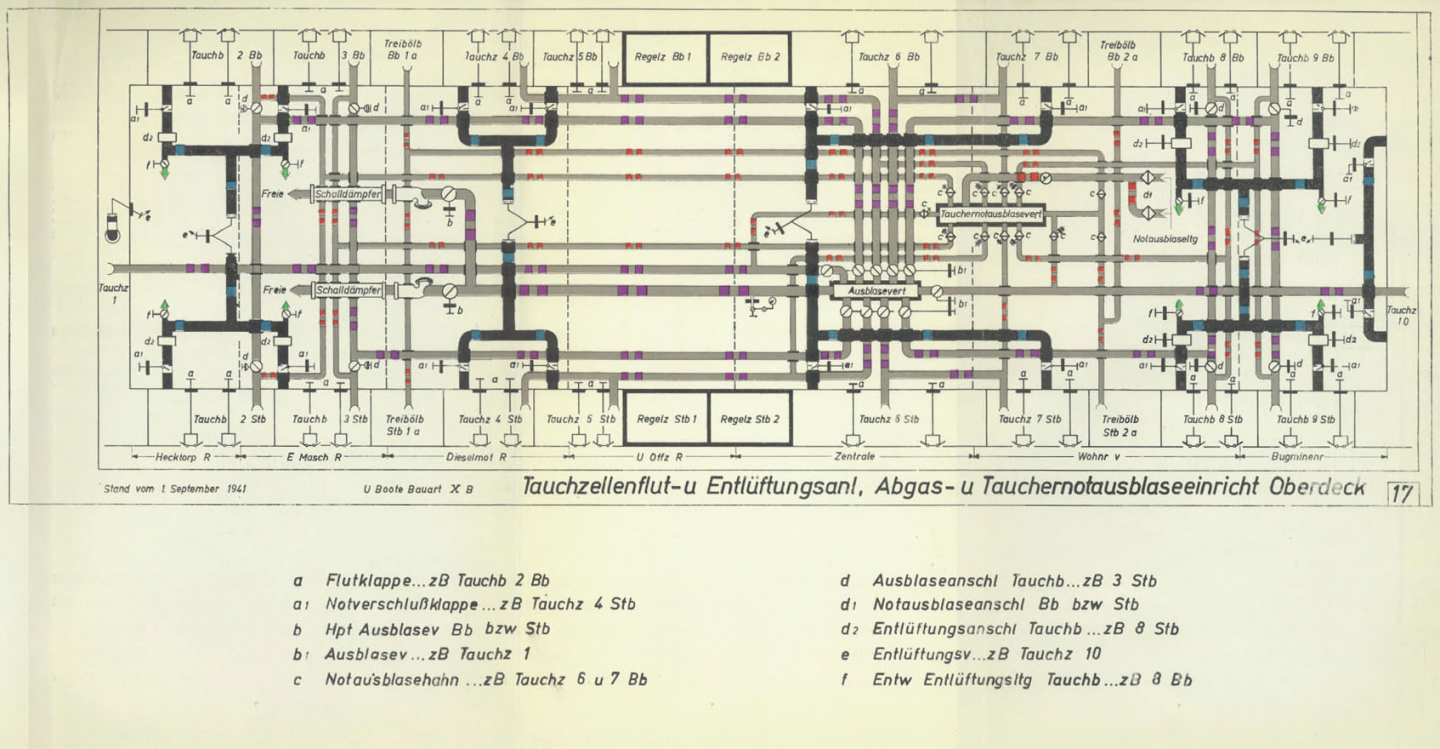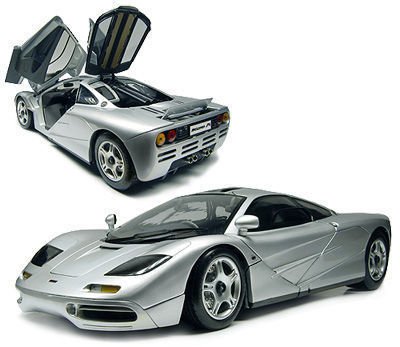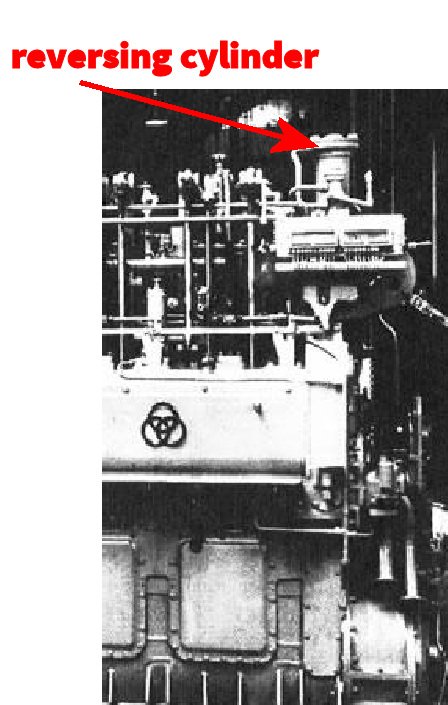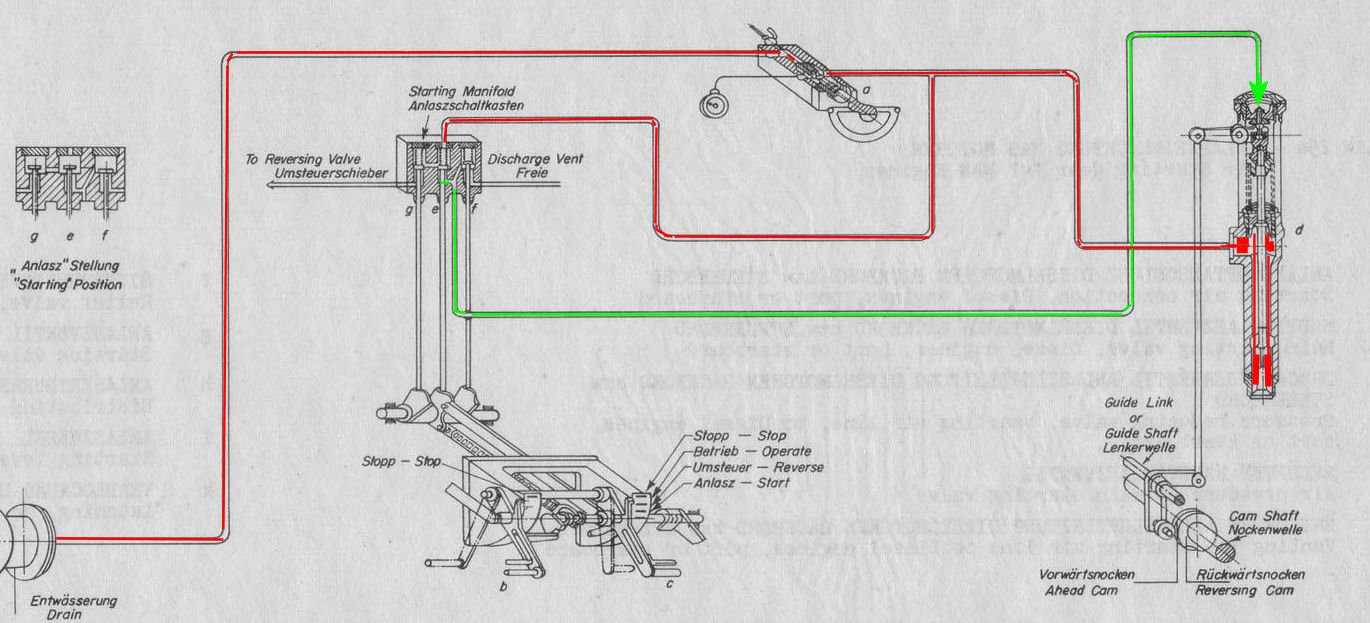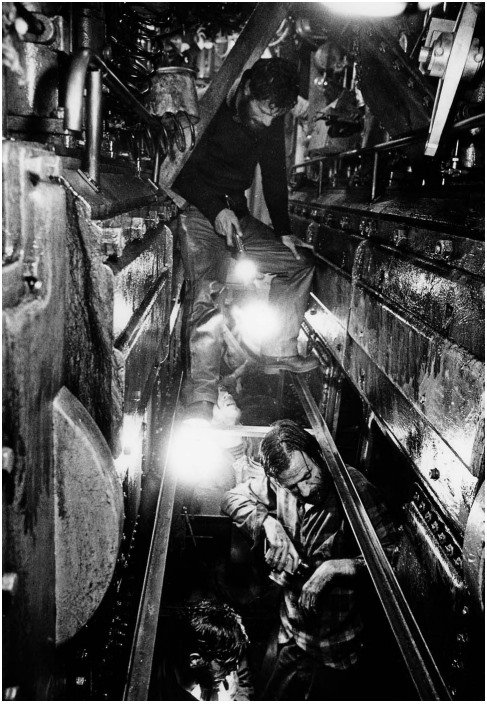-
Posts
3,585 -
Joined
-
Last visited
Content Type
Profiles
Forums
Gallery
Events
Everything posted by yvesvidal
-
Merry Christmas to all and my Best wishes of Health, Love, Friendship and modeling passion for the New Year. A few updates on that Christmas day. The Diesel engine compartment is now completed and the pressure hull has been installed. The two pieces of pipes for the exhaust as well as the fresh air ingress pipe have been glued and sanded flush with the bulkheads. I have added an extra air tank on the pressure hull, tanks that were used to crank up the diesel engines. The electrical wiring has been completed and verified. We have four white LEDs in series, requiring close to 11 Volts to illuminate. With an adjustable resistor, I will be able to harmonize the intensity of the light, with the other compartments. The current is about 3 mA. The LED above the wood desk is a micro-LED and provides a more classic and yellowish color than the ceiling lights. It is now time to insert the module into the hull. Again, at this point, it is difficult and delicate to go back. The existing wires are carefully inserted in the slots provided by Trumpeter, on each bulkhead. The module inserts in the rear compartment, through the torpedo recess and two large pins, hidden by some apparatus. The module is only glued on the front bulkhead. Closing the starboard hull, this is what we will be able to see: You see the importance of creating the side tanks openings: And a couple of pictures for the claustrophobic's: Folks, I have reached a point where I have two modules to build and countless details to finish on the deck, conning tower, guns and on top of each module, when visible. Some electrical work needs to be completed, as well as some paint touch-ups and light weathering in multiple places. I will finish this model but have decided to take a little break from it and tackle instead one of the two projects I have at heart. One of them (there are many...) could go in this forum as it is boat related. The other one, not being something that floats on water would have to be developed in the "Shore Leave" section. Whatever is being done, I will provide a link to keep you updated. The Type VIIc will be placed back in its box (yes, the fully assembled hull fits) and stored for a few weeks or months. I wish you all Happy and Relaxing Holidays, and passion, fire and energy for many projects. Yves
-
I suspect that this kind of maintenance could not have been done at sea. This is just a way to show how the engine was made, the sheer size of the cylinders and to allow the observer to see the complete engine in the background. It is a model and not a representation of how it was used during a sea patrol. Many thanks for all the "likes" and support. It is very motivating. Yves
-
The crew is in place, around the diesel engines. It is the last piece of details on this compartment, before sealing it with the pressure hull. A few pictures.... Everybody is very busy.... Let's enjoy all these perspectives, because it will not be possible again, when the pressure hull is glued on top. Yves
-
You may not be good with computer, but you build superb models. Yves
-
Don, I have read some publications from Maciek. Thanks for all the good info you are providing to this thread and for your fantastic book. Yves
-
We now have reached a point, when serious decisions must be taken. Assemble or not assemble? I am sure you all agree that it needs to be put together. Therefore, here are a few pictures: And the silly pictures... I hope you have enjoyed being reduced to 1/48th scale and taking a tour of that interesting compartment. Next time, we seal it with the ceiling..... but first some crews.... Yves
-
Moving on with the walkway. Basically just a few parts according to Trumpeter, but a nightmare to assemble..... That table made of photo-etched parts is ridiculous and a challenge to the nerves. You can see the result of my assembly on the picture..... a disaster. Sometimes, it is good to show the casualties of modeling, as most builders only post their success: Trumpeter should have offered a table made of plastic parts and it would have been so much easier to assemble. instead, I decided to do mine with the "legs" of electronic components, bent and inserted in the walkway, after drilling #60 holes. A lot easier and so much sturdier. Quite realistic too: When all is painted and said: I have no idea what this table is used for. Is it used for mechanical jobs? Don, can you chime in and enlighten us? Yves
-
Don, you truly are the expert. I may have to change it.... I am sure the rivets counters will argue with my choice..... Yves
-
Most likely, I don't think they had ball pens yet and I doubt they used fountain pens inside a submarine. Yves
-
Still toying, yes literally, with the front bulkhead. I have decided with some spare parts to replicate the fan system, used to bring fresh air and extract used air from the inside of the pressure hull. Of course, Trumpeter does not provide the second set of fan/turbine as well as some of the pipes and it is very regrettable. It takes a lot of butchering and gluing of the pipes to get to a decent and matching results. I have also added the electric motors which are driving the turbines, as these parts were not designed by Trumpeter. Please do not ask for the electric wires of the fan motors.... Close up on the little wooden desk. Barely visible against the wall, is a German print indicating essential operations of the Diesel engines. On the wooden desk, is a schematic of some of the numerous pipes circuits and a large pen. Not yet visible, is a small light to the left of the red control hand wheel. The micro wires are coming above on the bulkhead. We now have quite a few pieces to put together. However, before the final assembly, I still have to work on the walkway. Yves
-
Thanks Don for these complement of information. Obviously, Trumpeter did not know about these peculiarities, or decided to skip them. Yves
-
I have been working on the exhaust system of the Port diesel engine. Most of it will be completely invisible, but I have the satisfaction to know that it is there.... First, the ceiling had to be slotted to allow the fixed exhaust pipe to go through. In fact, it is almost impossible to present the piping correctly, if you plan to use the hole provided by the kit. Below is a picture before: And after: The right hole will be used to insert just the elbow, from the top, and as such does not need to be slotted. The exhaust is built by carefully gluing the pipe to the ramp: The tube is coiled with some heavy cotton thread to simulate the insulation band, that was used to insulate against the noise and heat. Finally, after gluing in place the exhaust: Most of it is frankly invisible. So, let's enjoy it as we will never see it again, once the ceiling is installed. Yves
-
We are coming soon (hopefully) to a conclusion on the Diesel engines compartment. I am now working on the front bulkhead: The bulkhead is cut on the starboard side, to show the various tanks, since this section will be visible from outside. And to make sure that the rear kitchen bulkhead matches that one, we cut them together: And then, it is the delicate assembly and endless touch-ups with paint, to make it look decent and realistic: A few more details, a light above the desk and we will move to the walkway assembly. Yves
-

Enzo Ferrari by CDW - Tamiya - 1:12 Scale - PLASTIC
yvesvidal replied to CDW's topic in Non-ship/categorised builds
I have the McLaren F1 from Model Art. This is not a kit, but is at the same scale as your Ferrari. Made of metal, plastic and rubber parts. I bought it in Europe about 25 years ago, when the car came out. Yves -

Enzo Ferrari by CDW - Tamiya - 1:12 Scale - PLASTIC
yvesvidal replied to CDW's topic in Non-ship/categorised builds
I think he wants your Tamiya kit.... Yves -
Beautiful! A brand new boat with sparkling white sails. Yves
- 315 replies
-
- master korabel
- avos
-
(and 1 more)
Tagged with:
-
To stay on the subject of the Diesel engines used in the Type VIIc vessels, it is important to note that these motors could turn in both directions. Switching from one direction to the other did not take much time and could be done in less than 30 seconds by seasoned mechanics. The reversing mechanism was cleverly designed and was controlled by a single cylinder on top of each engine: The control was done from the front of the engines and the following drawing provides a detailed diagram of the mechanism: Finally, these engines had rather fragile bearings. It was not uncommon to have to replace them during a cruise and trained mechanics could do that daunting and extremely dirty task in a few hours. The movie Das Boot depicts such intervention being done: Mr. Tore, the expert who navigated the U-995, recounts in his memoirs how delicate and tedious it was to replace one or multiple crankshaft bearings while navigating. Yves
-
So, the U-552 was built in the shipyard of Blohm und Voss, in Hamburg on September 25, 1939. U-552 was part of a sub-series of eight vessels, ranging from 551 to 558. These units were equipped, apparently, with the volumetric compressor driven by gears (not turbo-charged also known as Buchi Super-charged) and as such, used the G.W engines made by Krupp. Here is what the Type VIIc Manual tells us: G.W. diesel engine installation. Diesel engine installation of some Type VII C boats consists of 2 G.W.-engines with associated auxiliary machinery. The engines are single-acting four-cycle with fuel spray injection and supercharging. Both engines are reversible. a) G.W. general and performance figures. Type Germaniawerft Marine diesel engine, Model e.v. 40/46 with forced induction by Roots type blower Power Full load 1400 SHP Overload 1500 SHP Maximum load 1600 SHP Speed 470/480/490 RPM Fuel oil consumption 254 kg/hour (full load) Cylinders 6 Cylinder diameter 400 mm Stroke 460 mm Displacement 6 x 57.8 liters Overall length 5600 mm Overall height 2895 mm Overall width 1525 mm b) Construction of the GW propulsion plant. Bed plate and engine block (lower part) are constructed as one welded block, which consists of single, vertically standing cast steel frames, which are held down by welded steel plate. The two cylinder blocks (three cylinders each) are connected with this bed plate by means of tie rods passing through flanges on the lower edge of the cylinders. These tie rods relieve the working cylinders of the combustion gas forces and transfer them to the upper part of the raised bed plate. The cylinder heads are pressed by studs on the working cylinders and thus form the upper abutment for the cylinder cans. The fuel oil is injected into each cylinder by a fuel oil injection pump (Bosch design) and a fuel oil injector (type G.W.) into the combustion chamber. Oil from a fuel oil feed pump (gear pump) is transmitted to the individual fuel oil injection pumps. The delivery rate of the fuel oil pumps is controlled by shifting the regulator linkage (changing volume by means of beveled edge). The control regulator linkage can be moved by governor as well as by fuel oil control lever at the operating station. The governor is built as a centrifugal governor and is driven by an idler gear from the camshaft drive. Charging (increase in the amount of air to burn) takes place via a Roots type supercharger (G.W. type). The charger is arranged on the clutch side of the engine and is driven from the crankshaft by means of gear wheels through a hydraulic clutch. This hydraulic clutch and interlocking mechanism allows the charger to be used only while driving forward and engaging and disengaging it only when the engine is running. Cylinder barrels, cylinder heads, exhaust valves and exhaust manifolds are cooled by sea water, which is fed by a coupled cooling water pump (piston pump). The coupled lubricating oil pumps (gear pump) feed lubricating oil that is used to operate the hydraulic governor as well as for lubrication of the crankshaft bearings, cylinder barrels, camshaft bearings, the fuel oil pump control linkage and drive as well as for supercharger blowers. The engine can be reversed either by means of compressed air or by means of a special hand oil pump. Altering the direction is controlled by shifting the cam shaft in the longitudinal direction, so that the cams for the opposite direction of rotation engage push-rod rolls. c) Auxiliary machinery associated with G.W. engines. 1. Superchargers. In order to have a greater air supply available, a Roots type blower is mounted on the clutch side of the engine. The blower is powered from the crankshaft of the engine by means of gear wheels. The blower is driven by means of a wrap-spring coupling, which prevents torsion vibrations and which takes up the distortion of the rotating motion. The supercharger clutch is a double cone type which can be engaged and disengaged from the operation station only while in "Ahead" drive, and only when the engine is running at full operational speed. In order to preserve the friction lining, the operating speed is to be lowered if possible when engaging to on. 2. Pumps. Cooling water pump. The cooling water for cooling the engine oil cooler, cylinder barrels, cylinder heads and the exhaust is fed by a double piston pump, which is at the front of the engine. The drive takes place via a crank, which is driven by gear wheel transmission from the crankshaft of the engine. A safety valve on the discharge side of the pump should respond when outlet valves are closed. Lubricating oil pump. The entire engine as well as all important contact surfaces are lubricated by oil fed from lubricating oil pressure line under appropriate, reduced pressure. The lubricating oil pump is driven by the gear wheel of the cooling water pump drive. It is a gear pump and operates in both directions of rotation. The adjustment of oil pressure takes place via a pressure control valve from the operating station. Fuel oil feed pump. The fuel oil is supplied by a special feed pump from the gravity fuel oil tank to the fuel oil injection pumps. It is a gear pump and is suitable for both directions of rotation. It is arranged over the camshaft. Auxiliary cooling water pump. For the cooling of the engines in case of failure the coupled cooling water pump an electrically driven centrifugal pump is provided in the diesel engine room as an auxiliary cooling water pump. The pump performance is 48 m³/hour of water against 30 meters H2O. The pump housing is directly connected with the associated driving motor. Hand cooling water pump. The hand operated water pump is designed as a double-acting piston pump. It draws sea water and discharges it to the cooling water control manifold. Auxiliary lubricating oil pump. The auxiliary lubricating oil pump serves for the lubricating of the engines in case of failure of the coupled lubricating oil pumps and before start-up. The pump is an electrically driven vertically arranged screw pump and supplies 38 m³/hour of oil with discharge head of 50 meters H2O and suction head of 5 meters H2O. The auxiliary lubricating oil pump can be also be used for the distribution of fuel oil. Hand lubricating oil pump. The hand lubricating oil pump is used to transfer lubricating oil from supply tanks to the collective tanks, and in case of failure of the auxiliary lubricating oil pump to pump oil before the start-up of the engines. It is designed as double acting piston pump and its performance is 4.2 m³/hour. 3) Governor, filter, lubricating oil cooler, starting air tanks, lubricating oil purifying system. Governor. A centrifugal regulator is used as a governor which is mounted on the clutch side of the engine and is driven by an idler gear from the cam shaft drive. The governor prevents exceeding the maximum permissible engine speed by more than 10 percent. If the maximum permissible engine speed is exceeded, the governor pushes control linkage towards the zero position. As soon as the number of revolutions decreases, the governor returns to its previous position and the control linkage brings the fuel oil lever back to the operational position by means of a spring. Fuel oil and lubricating oil filter. The purifying of the fuel oil is done by means of a system of EC-edge disk filters. To protect these filters against coarse impurities in the fuel oil a coarse sieve is inserted in the line before the fuel oil gravity tank. For purifying lubricating oil an EC-edge disk filter is used for each engine. The bearing lubricating oil as well as oil for the clutches and the hydraulic governor is filtered by these filters after branching from the oil cooler. Lubricating oil cooler. The entire lubricating oil cycling installation is cooled by a lubricating oil cooler attached to each engine. The cooling effect is achieved by forcing oil through coils, around which sea water flows. The cooling water installation is so designed that oil cooler can be bypassed as a whole or partially. Starting air tanks. Starting and reversing the engines is done by means of compressed air at 30 at. The compressed air is stored in dedicated tanks of capacity 200 liters each, connected together to the high pressure distributor (high pressure air bank 1 – high pressure manifold) through the reduction valve. The pressure reducing valve works automatically and holds the pressure in the starting air cylinders at 30 at. The tanks have safety valves set at 30 atmospheres at as well as necessary connecting valves, drain valves and control valve with pressure gauge. Lubricating oil purifying system. An electrically driven purifier with a capacity of 250 liters/hour is provided in the diesel engine room for purifying dirty lubricating oil. The purifier is equipped with an electrical oil pre-heater and a hot water pre-heater. Directly coupled with the drive shaft are the pure oil and dirty oil feed pumps. These two geared pumps arranged one after the other. The attached dirty oil pump sucks the contaminated oil from the lubricating oil collecting tanks and passes it over the oil pre-heater into the lubricating oil purifier. The cleaned oil is then pumped by the pure oil pump. The waste water from the oil purifying process drains into the bilge. A hot water pre-heater is provided for better cleaning of engine lubricating oil. 1-1 Comparison between engines M.A.N. - G.W. M.A.N. Krupp (G.W.) Number of cylinders 6 6 Piston displacement 57.8. liters 57.8 liters Piston speed 7.2 meters/second 7.2 meters/second Efficiency 82.5 81.0 Speed 470 RPM 470 RPM Supercharger speed 10,900 RPM 10,900 RPM Performance 1400 SHP 1400 SHP Stroke 460 mm 460 mm Cylinder diameter 400 mm 400 mm Length (whole engine) 5630 mm 5600 mm Width (whole engine) 1400 mm 1400 mm Height 2810 mm 2895 mm Engine weight 38.476 tons 43.440 tons Weight to power ratio 13.75 kg/SHP 15.5 kg/SHP Fuel oil consumption (+) 0.165 kg/SHP 0.182 kg/SHP Supercharger Buchi Exhaust gas turbine B.B.C. Roots type charger G.W. Fuel oil regulation Over flow adjustment Chamber volume by means of beveled edge adjustment Yves
-
Katuna, I am not planning to drop any pistons, but you are right about the pairing. That is exactly how they worked. Also, Pistons have a little crown on top, made of 4 segments. Enough insanity for me.... 😉 Yves
-
The starboard engine is more or less completed: Each cylinder of the engine has a bore of 400 mm which is about 8 mm at the 1/48 scale. I happen to have aluminum tubes of that exact size, for their inner diameters. I have decided to represent the engine during its construction or rather during extensive repairs. The long threaded rods to hold the head and block around the sleeved cylinders, are made of brass rod. I did not have a 1 mm die (smallest I have is 2 mm), otherwise I would have tapped the extremities of each rod. I hope it does not look too bad....from a distance. At this point, the second engine can be placed on its cradle: This makes for a cramped compartment, as is the prototype. It also allows a nice view on the Port engine with all its finished details. Some funny views.... Soon, we will be closing the lid (installing the ceiling) on these engines. Yves
About us
Modelshipworld - Advancing Ship Modeling through Research
SSL Secured
Your security is important for us so this Website is SSL-Secured
NRG Mailing Address
Nautical Research Guild
237 South Lincoln Street
Westmont IL, 60559-1917
Model Ship World ® and the MSW logo are Registered Trademarks, and belong to the Nautical Research Guild (United States Patent and Trademark Office: No. 6,929,264 & No. 6,929,274, registered Dec. 20, 2022)
Helpful Links
About the NRG
If you enjoy building ship models that are historically accurate as well as beautiful, then The Nautical Research Guild (NRG) is just right for you.
The Guild is a non-profit educational organization whose mission is to “Advance Ship Modeling Through Research”. We provide support to our members in their efforts to raise the quality of their model ships.
The Nautical Research Guild has published our world-renowned quarterly magazine, The Nautical Research Journal, since 1955. The pages of the Journal are full of articles by accomplished ship modelers who show you how they create those exquisite details on their models, and by maritime historians who show you the correct details to build. The Journal is available in both print and digital editions. Go to the NRG web site (www.thenrg.org) to download a complimentary digital copy of the Journal. The NRG also publishes plan sets, books and compilations of back issues of the Journal and the former Ships in Scale and Model Ship Builder magazines.



